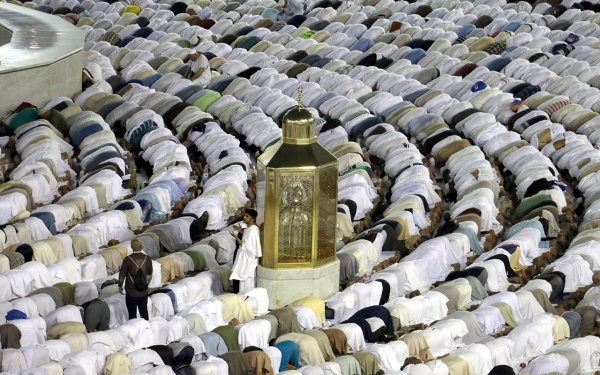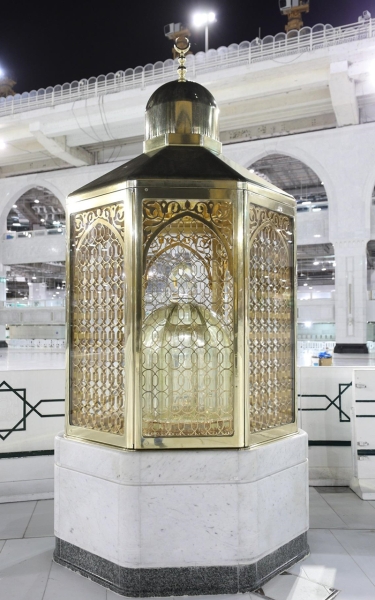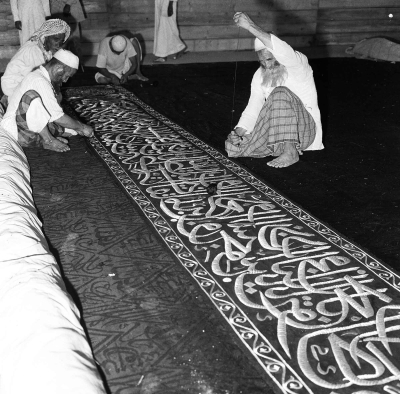

Maqam Ibrahim is an ancient stone on which the Prophet Ibrahim, peace be upon him (PBUH), stood while building al-Kaaba al-Musharrafa, raising its walls. It is a landmark of the Grand Mosque, situated on the eastern side of al-Kaaba al-Musharrafa, facing the door and the Multazam.
Pilgrims pass by the sides of the Maqam Ibrahim as they circumambulate the Kaaba al-Musharrafa, and they perform the two Rak'ahs of Tawaf behind the maqam, in compliance with a verse from the Quran: "Take from the station of Abraham a place of prayer." (Al-Baqarah: 125).
Description of Maqam Ibrahim
Maqam Ibrahim is encircled by a transparent dome constructed of glass and crystal, allowing for a clear view of the maqam stone that bears the footprints of Prophet Ibrahim (PBUH). Inside, a gilded metal mesh encompasses the glass cover, crowned by a small dome.
The maqam is made of a soft stone known as water stone. It is a cube measuring fifty cm in length, width, and height. In the middle of the stone, there are two visible oval-shaped holes that represent the footprints of Ibrahim al-Khalil (PBUH).
The maqam base is made from Carrara marble and adorned with green granite. The maqam's top cover stands at a height of 1.30 m, boasting a forty cm diameter at its base with a uniform twenty cm thickness all around. Its exterior diameter at the base measures eighty cm, while the circumference of its circular base is 2.51 m.
History of Maqam Ibrahim
The maqam's history traces back to when Ibrahim (PBUH) used it as a means to access the upper part of al-Kaaba al-Musharrafa. His son Ismail handed him the stones for the construction of al-Kaaba al-Musharrafa. As Prophet Ibrahim finished building one side, he moved the stone to the next side until the construction of the Kaaba was completed from all four sides.
Following the construction of al-Kaaba al-Musharrafa in the time of Ibrahim (PBUH) the maqam stood adjacent to the Kaaba's wall. It remained in this position until the time of Prophet Muhammed (PBUH), along with his successor, Abu Bakr al-Siddiq, may Allah be pleased with him. Caliph Umar Bin al-Khattab, may Allah be pleased with him, then relocated it away from the Kaaba's wall to create space for Tawaf performers and worshipers.
Development stages of Maqam Ibrahim
The maqam has undergone a number of reforms and renovations over history, with its current form taking shape during the reign of King Faisal Bin Abdulaziz Al Saud. This transformation was initiated following a directive to relocate the shrine to the rear, to better accommodate the tawaf performers, as approved by the founding council of the Muslim World League. This decision was made to mitigate the dangers of overcrowding during religious seasons and to safeguard the lives of tawaf performers. This took place in the year 1965, these efforts culminated in the demolition of the existing maqam structure and its replacement with a dome-encased glass cover, which is the structure visitors encounter today.
In the era of King Fahd Bin Abdulaziz Al Saud, the maqam's metal structure was exchanged for one crafted from copper, and the concrete base transitioned from black to a combination of white marble and green granite.
Related quizzes


